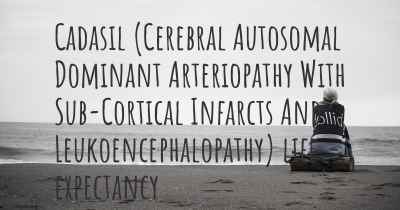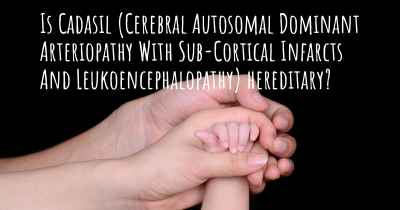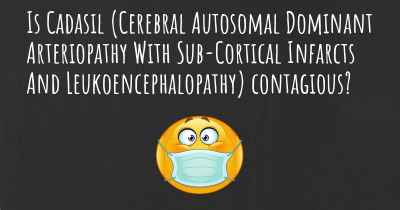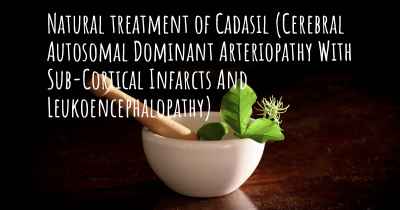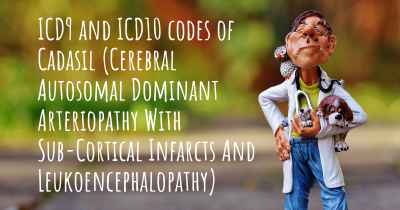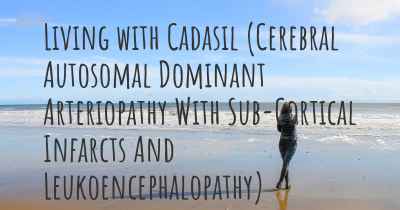What is the history of Cadasil (Cerebral Autosomal Dominant Arteriopathy With Sub-Cortical Infarcts And Leukoencephalopathy)?
When was Cadasil (Cerebral Autosomal Dominant Arteriopathy With Sub-Cortical Infarcts And Leukoencephalopathy) discovered? What is the story of this discovery? Was it coincidence or not?
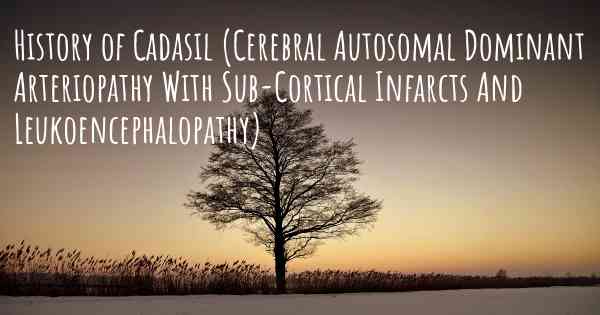
Cadasil (Cerebral Autosomal Dominant Arteriopathy With Sub-Cortical Infarcts And Leukoencephalopathy) is a rare genetic disorder that affects the small blood vessels in the brain. It was first described in the medical literature in 1976 by French neurologist Dr. Marc R. Joutel and his colleagues. The name Cadasil was coined in 1993 to describe the distinct clinical and radiological features of the disease.
Cadasil is an autosomal dominant disorder, meaning that a person only needs to inherit one copy of the mutated gene from either parent to develop the condition. The disease is caused by mutations in the NOTCH3 gene, which is located on chromosome 19. These mutations lead to the production of abnormal NOTCH3 protein, which accumulates in the walls of small blood vessels in the brain.
The history of Cadasil research can be traced back to the late 1960s when Dr. Joutel's mentor, Dr. Raymond Escourolle, noticed peculiar changes in the brain tissue of a patient who had suffered multiple strokes. This observation sparked Dr. Joutel's interest, and he began studying the disease in more detail.
In the early years of Cadasil research, the disease was often misdiagnosed or overlooked due to its rarity and lack of awareness among medical professionals. However, as more cases were identified and reported, the understanding of the disease gradually improved.
In 1993, Dr. Joutel and his team published a landmark paper in the journal Stroke, where they described the clinical and radiological features of Cadasil in detail. They also proposed the name Cadasil, which has since become widely accepted.
Over the years, researchers have made significant progress in unraveling the underlying mechanisms of Cadasil. They discovered that the accumulation of abnormal NOTCH3 protein in the blood vessel walls leads to the degeneration and thickening of these vessels, impairing blood flow to the brain. This reduced blood flow can cause recurrent strokes, cognitive decline, and other neurological symptoms.
Genetic testing for Cadasil became available in the late 1990s, allowing individuals with a family history of the disease to undergo screening. This has been crucial in confirming diagnoses and providing genetic counseling to affected families.
As awareness of Cadasil increased, more research groups around the world started investigating the disease. They aimed to understand its prevalence, clinical manifestations, and the impact of specific NOTCH3 mutations on disease severity.
In recent years, advancements in neuroimaging techniques, such as magnetic resonance imaging (MRI), have provided valuable insights into the progression of Cadasil. These imaging studies have revealed characteristic white matter abnormalities and the presence of small infarcts in the subcortical regions of the brain.
Despite the progress made in understanding Cadasil, there is currently no cure for the disease. Treatment mainly focuses on managing symptoms and preventing complications. This may involve medications to control blood pressure, prevent blood clots, and manage other associated conditions.
Research efforts continue to explore potential therapeutic targets for Cadasil. Some studies have investigated the use of drugs that target the NOTCH3 protein or aim to improve blood flow in the affected blood vessels. However, further research is needed to develop effective treatments.
In conclusion, the history of Cadasil spans several decades of research and discovery. From its initial description in the 1970s to the identification of the NOTCH3 gene mutation and the development of genetic testing, our understanding of this rare genetic disorder has significantly advanced. Ongoing research aims to improve diagnosis, treatment, and ultimately find a cure for Cadasil.
